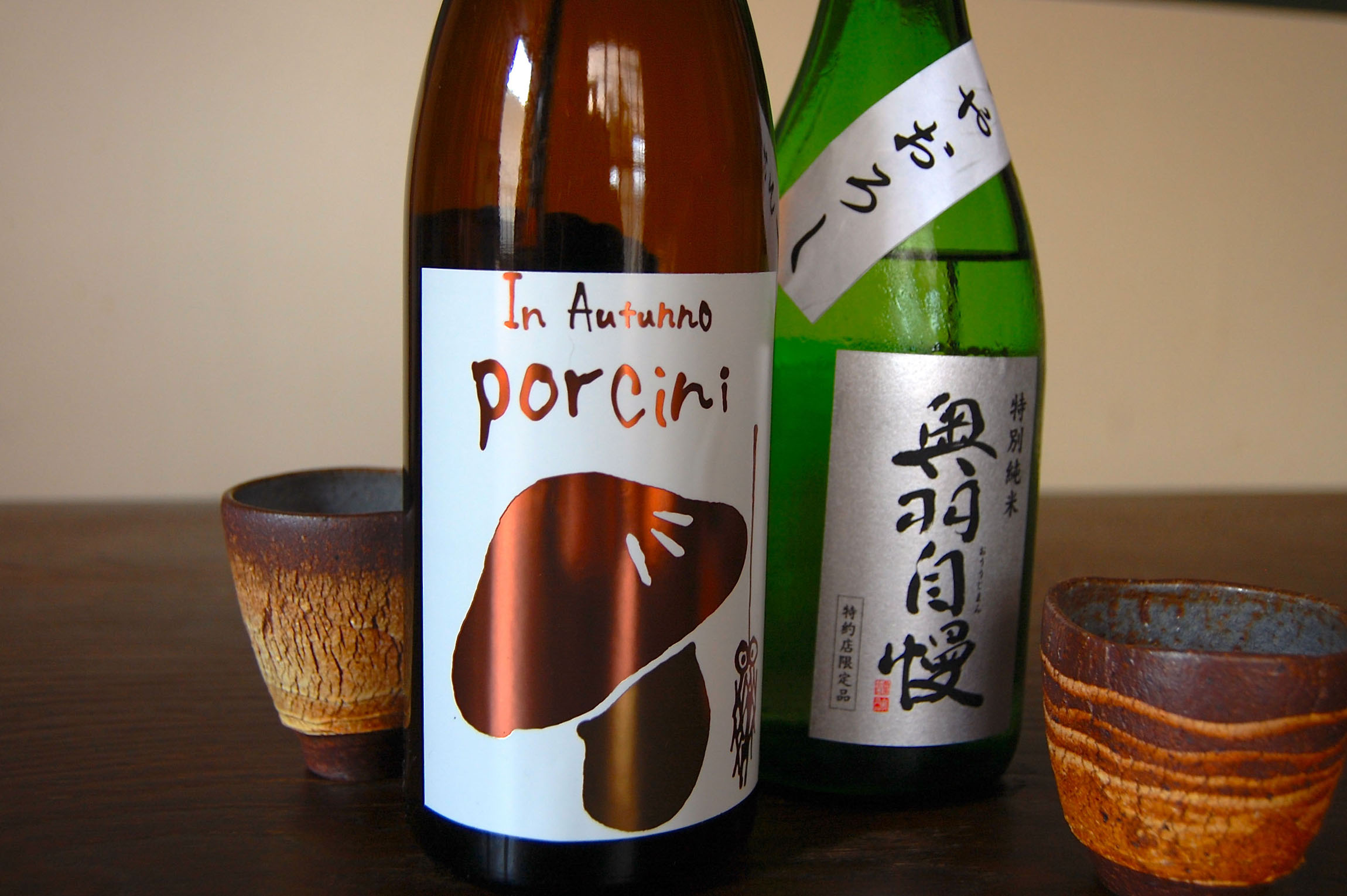The seasons in Japan can turn on a dime. When I'd left Tokyo for Sweden, at the end of September, summer had shown no sign of abating: The city was still sweating in 32-degree heat and 60 percent humidity. When I returned five days later, the air was lighter and the evenings pleasantly crisp. Fall had arrived. As if on cue, sake shops across the country began stocking their shelves with aki-agari and hiyaoroshi — limited-edition, seasonal brews.
Traditionally, fall was the prime time for sake drinking. Sake was brewed during the cold winter months and then pressed in the spring. While fresh shiboritate (just-pressed sake) has a certain appeal, sake, like wine, benefits from a bit of time to allow the flavors to mingle and mellow. New spring brews, though exuberant, tend to exhibit sharp-edged green notes and bitter astringency. Before the days of refrigeration, six months was deemed the appropriate aging time, and sake released in the fall was called aki-agari (fall yield). These days, maturation periods vary according to the flavor profiles each brewer wishes to create, but you'll still see the expression on a lot of labels this season.
Fall's hiyaoroshi refers to sake that has been pasteurized only once, after pressing, before it is shipped (the general term for sake that has been pasteurized only once after pressing is namadzume). Usually, sake is heated twice to halt the enzymatic action of bacteria and yeast, which can contribute to off flavors and aromas, and so unpasteurized namazake needs to be refrigerated. In the Edo Period (1603-1867), sake was stored in large, wooden tanks in the coolest part of the brewery, and any sake transported during the summer would have been pasteurized twice. Once the temperatures began to drop around September, however, the sake could be shipped without undergoing a second fermentation. Then, just as now, hiyaoroshi was prized for its balance of lively freshness and graceful harmony.



